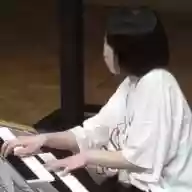“Japanese Traditions”: Japanese Festival Music (Jun Hōgaku)
Festival hayashi music is indispensable to Japanese festivals.
It’s music performed with traditional Japanese instruments—such as taiko drums, flutes, and small gongs—sounds that every Japanese person has likely heard somewhere.
Classified as pure traditional Japanese music, festival hayashi has long been performed and cherished at festivals across the country.
In this article, we’ll introduce a wide variety of such local festival hayashi!
Will your hometown’s festival hayashi be featured?
If you have information like “There’s also this kind of festival hayashi!”, please share it with us!
- Popular Festival Songs Ranking [2025]
- Traditional Japanese Music: Famous Pieces of Gagaku and Kagura. Recommended Traditional Japanese Music
- [Let's Enjoy Japanese Festival Songs!] Songs about festivals. Famous songs related to festivals.
- [2025] Bon Odori songs every kid knows! A roundup of fun festival tunes
- Japanese ondō: a seasonal tradition everyone can enjoy.
- Soran Bushi: The heart of Japan passed down through song
- Akita Ondo: The Heart of Japan Passed Down in Song
- [Local Songs] Recommended tracks packed with Japan’s nationwide classics and hometown pride
- [Traditional Performing Arts of Okinawa] A special feature on classic Eisa songs that make you want to dance
- [2025] A classic song themed around summer festivals. A song of summer memories.
- [Japanese Folk and Regional Songs] A Collection of Beloved Masterpieces from Across Japan, Brimming with Local Pride
- A Collection of Moving Shakuhachi Masterpieces | Beautiful Japanese Melodies That Stir the Heart
- Japanese rokyoku: the traditional Naniwa-bushi narrative song
“Japanese Traditions” Japanese festival music of traditional Japanese music (21–30)
Ise Ondo Saijō Festival Hayashi

Saijo Festival Hayashi, performed at the Saijo Autumn Festival held in October at a shrine in Saijo City, Ehime Prefecture.
Also known as the Ise Ondo, this festival chant originally arose in the Province of Ise, which corresponds to present-day Mie Prefecture.
It has even been sung by Masafumi Akikawa, the tenor from Saijo City, Ehime, famous for “A Thousand Winds.” This chant has been passed down and sung in many places across Japan, with lyrics that vary by region.
Because it features not only percussion such as drums and gongs but also clearly sung lyrics, it allows you to experience the unique festival atmosphere of each locale more vividly.
Kohama Suijin Shrine Autumn Festival

People of all ages throughout the town come together to give their all in performing the portable shrine procession, festival music, and the lion dance.
The powerful performances will captivate anyone watching.
The lion dance is truly spectacular and is especially popular with children.
The sounds of the drums and flutes evoke a sense of nostalgia.
Nakaizumi Hachiman Festival Music

Festival music is an essential part of Japanese festivals.
Just hearing its distinctive rhythms and melodies makes people’s hearts dance.
The hayashi of Fuhachiman Shrine in Nakaizumi, Iwata City, Shizuoka Prefecture—where unique rhythms blend beautifully with irregular scales that hint at Indian music—conveys a truly magical power.
Built during the Tenpyō era, Fuhachiman is a shrine with a long history.
The lively parade floats and energizing shouts uplift the atmosphere, accelerating the joy of the festival.
If you’re interested in festival music and Japanese tradition, be sure to listen for yourself and experience its charm.
Tsuchiura Festival Hayashi Association Shinkawa Hayashi

Shinkawa-bayashi, performed during festivals held in Tsuchiura City, Ibaraki Prefecture.
This festival music takes its name from the Shinkawa (“New River”) that flows through Tsuchiura, and it has been passed down by many troupes in both Tsuchiura and neighboring Ushiku.
Accompanied by taiko drums, kane (hand gongs), and flutes, performers dressed in a variety of costumes present their dances.
The choreography, which seems to tell a story in harmony with the music, draws you in more and more the longer you watch.
It’s festival music that lets you savor Tsuchiura’s tradition with both your ears and your eyes.
Hanawa Bayashi

Like Kanda-bayashi and Gion-bayashi, Hanawa-bayashi is one of Japan’s three major hayashi festival music traditions.
Performed joyfully and lively with shouted calls woven in, it truly embodies the spirit of festival music.
You can hear Hanawa-bayashi during the float procession of the Hanawa Bayashi festival in Hanawa, Kazuno City, Akita Prefecture.
Held every year on August 19 and 20, Hanawa Bayashi is an important event that heralds the end of summer in Kazuno.
Festival Hayashi Music of Oume (Ome)

The festival music of the Ome Grand Festival radiates exceptional beauty and charm.
It is said to have already been performed by the late Edo period.
Musicians in brilliant costumes play instruments such as Japanese drums, flutes, and small gongs, and the sounds they weave possess a powerful, stirring quality.
In particular, the style known as kenka-bayashi, performed when the festival floats pass by, captivates listeners with its distinctive resonance and a rhythm reminiscent of a 16-beat pattern.
If you have the chance, it’s a type of festival music you should definitely hear.
Festival music of the Yoichi Festival

The Yoichi Festival is held every summer in Otawara City, Tochigi Prefecture.
It honors Nasu no Yoichi, a late-Heian-period warrior famed for shooting down the fan target during the Genpei War, and features a variety of events from daytime into the night.
The festival music performed there is marked by powerful taiko drums and the striking tones of kane gongs.
The vigorous performance vividly conjures the ferocity of the Genpei War’s battles, captivating listeners.
That energy invigorates the festival itself and lifts the spirits of its participants.






